Mattress Toppers
Can You Use Just a Mattress Topper
Get the ultimate comfort and support with just a mattress topper – find out how it can transform your sleep quality.
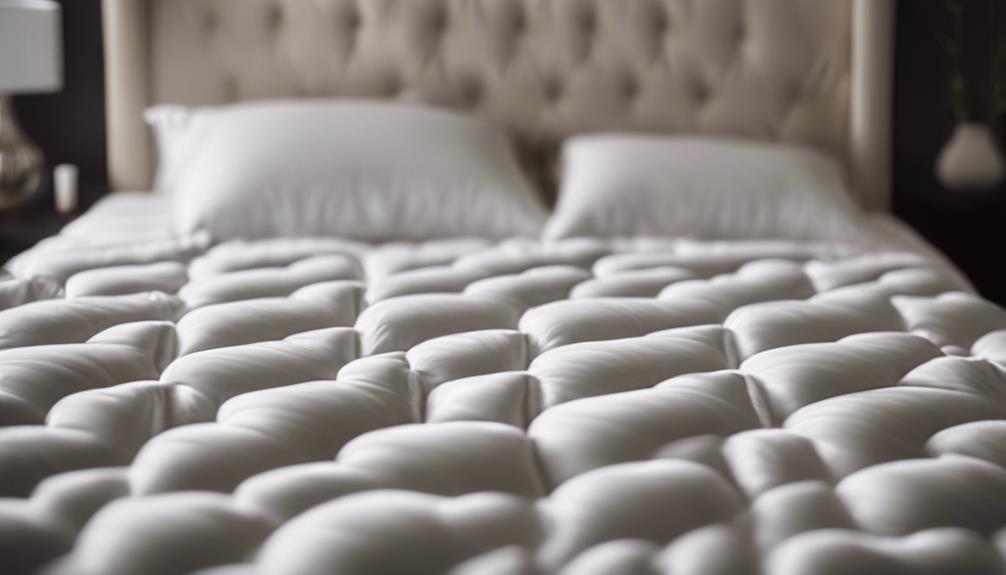
Using just a mattress topper can greatly enhance the comfort and support of your existing mattress, offering a cost-effective solution to improve your sleep quality without the need for a new mattress purchase. It enhances sleep by providing better cushioning and temperature regulation. However, make sure your topper is at least 5cm thick for adequate support. Proper maintenance and care are essential for longevity and comfort. Consult healthcare providers for specific health considerations. If you're looking to upgrade your sleep, a mattress topper could be the solution you need.
Key Takeaways
- Mattress toppers can be used alone for comfort and support.
- Consider proper thickness and material for optimal performance.
- Regular cleaning and maintenance are essential for hygiene.
- May compromise long-term spinal support and pressure relief.
- Ideal for temporary use but not a long-term mattress replacement.
Benefits of Using a Mattress Topper
We find that using a mattress topper enhances comfort, support, and temperature for a more restful night's sleep. By adding a mattress topper to your existing mattress, you can greatly improve the overall sleep quality without the need to invest in a new mattress. This cost-effective solution not only provides extra comfort but also enhances the support your existing mattress offers. The topper acts as a buffer between your body and the mattress, helping to alleviate pressure points and promote better spinal alignment.
Moreover, the customizable nature of mattress toppers allows you to adjust the firmness level according to your preferences, catering to individual comfort needs. This flexibility ensures that you can create the perfect sleep surface to suit your specific requirements. Additionally, mattress toppers are easy to store, making them a space-saving option ideal for those with limited storage space.
Whether you're looking to revitalize an old mattress or simply enhance your current sleeping experience, a mattress topper is a practical and budget-friendly solution.
Factors to Consider for Standalone Use
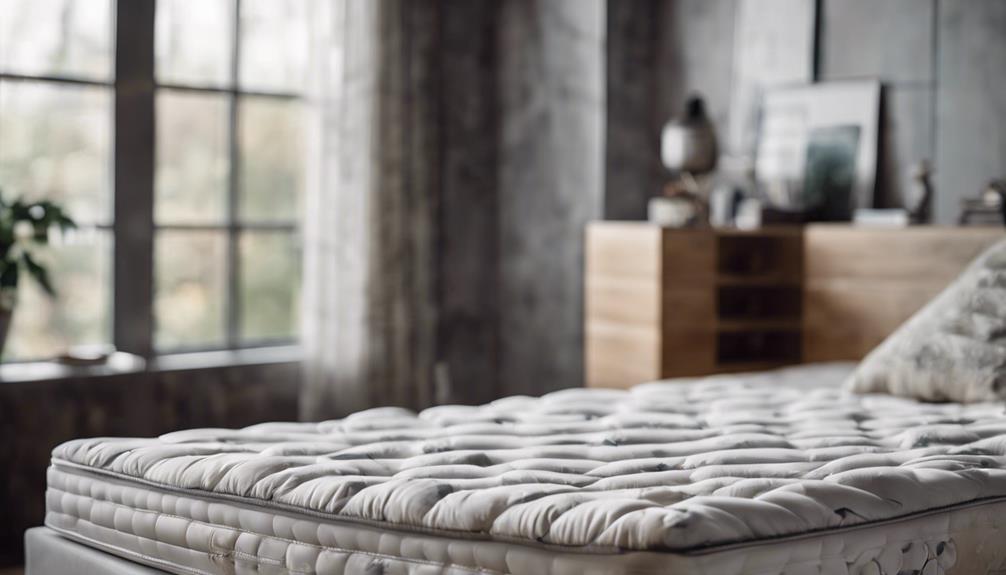
When considering using a mattress topper on its own, it's essential to look at factors such as thickness, material, and the surface it rests on.
The ideal thickness for standalone use ranges from 2 to 4 inches, ensuring a balance of comfort and support.
Additionally, the type of material, like memory foam or latex, can greatly influence the topper's performance when used independently.
Mattress Topper Pros
Looking for a versatile sleeping solution? Consider the mattress topper pros that enhance comfort and support when used as a standalone option.
When opting for a mattress topper for standalone use, it's important to choose one with a thickness of 2 to 4 inches. Materials like memory foam or latex are important for providing the necessary support. To maximize the benefits, make sure the topper is placed on a firm, flat surface.
Puffy Mattress Toppers are renowned for offering both comfort and support when used alone. However, the suitability of standalone use can vary based on factors such as weight, sleeping position, and personal comfort preferences. Make an informed choice to enjoy a restful night's sleep.
Standalone Use Considerations
When using a mattress topper on its own, it's important to take into account factors such as the individual's weight, preferred sleeping position, and personal comfort preferences. For standalone use, a thickness of 2 to 4 inches is ideal, providing adequate support and comfort.
Materials like memory foam or latex are essential for maintaining proper spinal alignment and pressure relief. The surface where the topper is placed also plays a significant role in its functionality, affecting its overall feel and performance.
Additionally, the suitability of a mattress topper for standalone use depends on the sleeper's weight distribution and favored sleeping position. A top-quality option like the Puffy Mattress Topper can offer luxurious comfort and support for those looking to use it on its own.
Sleeping on a Mattress Topper on the Floor
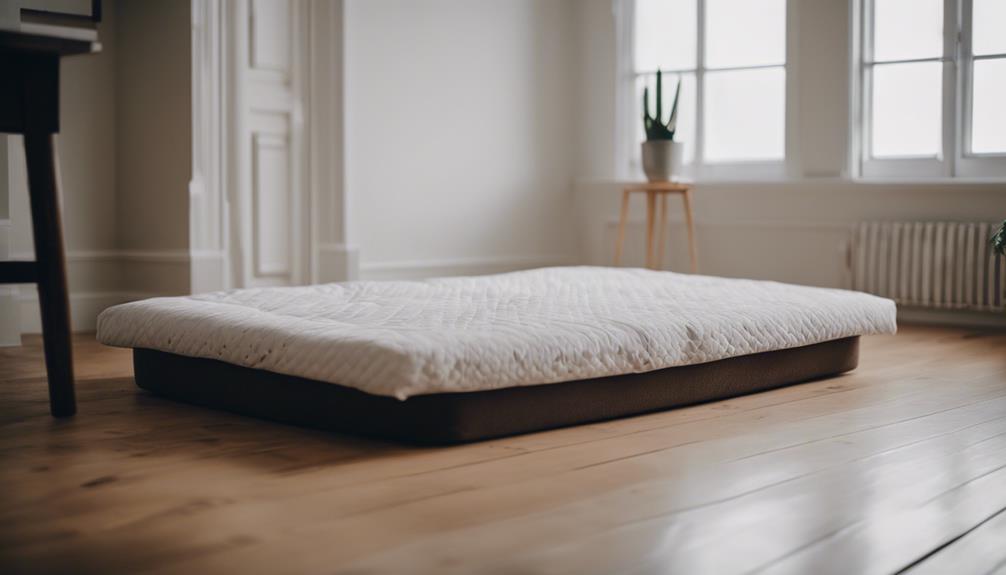
Placing a mattress topper on the floor offers both insulation and comfort for a restful night's sleep. When sleeping directly on a mattress topper on the floor, it's vital to take into account hygiene and maintenance aspects.
Regular cleaning and airing out of the mattress topper can help guarantee a comfortable sleeping environment. The type of floor can also impact the overall comfort level; hard floors may require additional padding beneath the topper for better support.
Mattress toppers are designed to enhance comfort and insulation, making them suitable for floor use. Platforms like Puffy offer comparisons to help individuals select the right mattress topper for this purpose. By choosing a quality mattress topper and practicing good hygiene practices, sleeping on a mattress topper on the floor can provide a cozy and supportive sleeping arrangement.
Advantages of Using a Mattress Topper
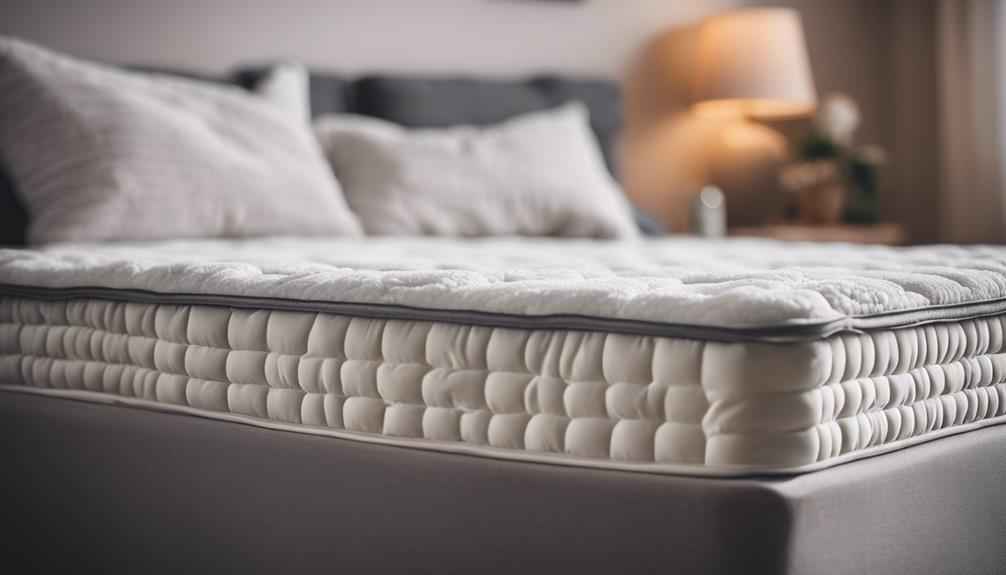
Utilizing a mattress topper presents numerous benefits, making it a practical and versatile bedding solution. A memory foam topper, for example, can enhance sleep quality by providing body contouring that molds to your shape, relieving pressure points and promoting better rest. This feature is especially beneficial for individuals with specific comfort preferences, as the topper can adjust to provide the desired level of support.
In addition, mattress toppers offer a cost-effective way to upgrade your sleeping surface without having to invest in a new mattress. By placing a topper on an old mattress, you can extend its lifespan and refresh its feel, saving money in the process. Moreover, using a mattress topper is environmentally friendly as it reduces the amount of mattress waste ending up in landfills.
The ability to customize firmness levels further adds to the advantages of using a mattress topper, ensuring a tailored sleeping experience that suits your needs.
Disadvantages of Using a Mattress Topper
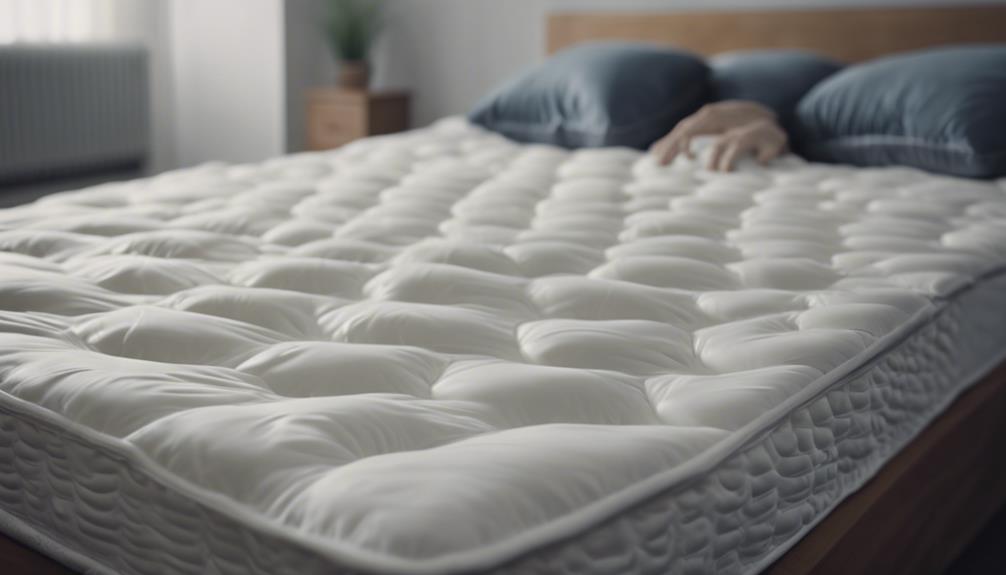
While mattress toppers offer some benefits, such as added cushioning, there are drawbacks worth taking into account. These include potential discomfort due to thin toppers not providing adequate support, making them more suitable for short-term use only.
Cleaning and maintenance can also pose challenges, especially with dust mites potentially accumulating in the foam over time.
Limited Support Provided
When taking into account solely a mattress topper, one may experience limited spinal support, potentially leading to discomfort and aches. Mattress toppers, while providing an extra layer of cushioning, often lack the necessary firmness to properly support the spine throughout the night. This inadequate support can result in discomfort and even contribute to back pain over time.
It's crucial to mention that mattress toppers are primarily designed to enhance the comfort of existing mattresses, not replace them entirely. Using a topper as a standalone bed may compromise long-term comfort and support, particularly for individuals with specific spinal support needs.
Hence, it's advisable to evaluate the overall support requirements before solely relying on a mattress topper for a good night's sleep.
Potential Discomfort Issues
We find that relying solely on a mattress topper for sleep may pose discomfort due to inadequate spinal support. Without proper support, the comfort level may be compromised, leading to potential issues with sleep posture.
Thin mattress toppers mightn't offer sufficient cushioning, impacting the overall quality of sleep. Additionally, hygiene could be a concern as cleaning mattress toppers can be challenging, affecting the cleanliness and freshness of the sleeping environment.
Placing a mattress topper directly on the floor may further exacerbate the lack of support needed for maintaining good sleep posture. Dust mites accumulating in foam mattress toppers, when used alone, can also contribute to hygiene issues, potentially causing discomfort and allergies.
Short-Term Solution Only
Using a mattress topper as a standalone bed offers a short-term solution, but extended use may lead to drawbacks such as insufficient spinal support and pressure relief compared to regular mattresses. It can result in aches, pains, and even void the warranty. Check out the table below for a quick comparison:
| Concern | Mattress Topper | Regular Mattress |
|---|---|---|
| Spinal Support | May be insufficient | Designed for proper support |
| Pressure Relief | Might not be adequate | Engineered to relieve pressure points |
| Longevity | Short-term solution only | Intended for long-term use |
For extended comfort and support, investing in a quality mattress is recommended over relying solely on a mattress topper.
When to Use a Mattress Topper as a Mattress
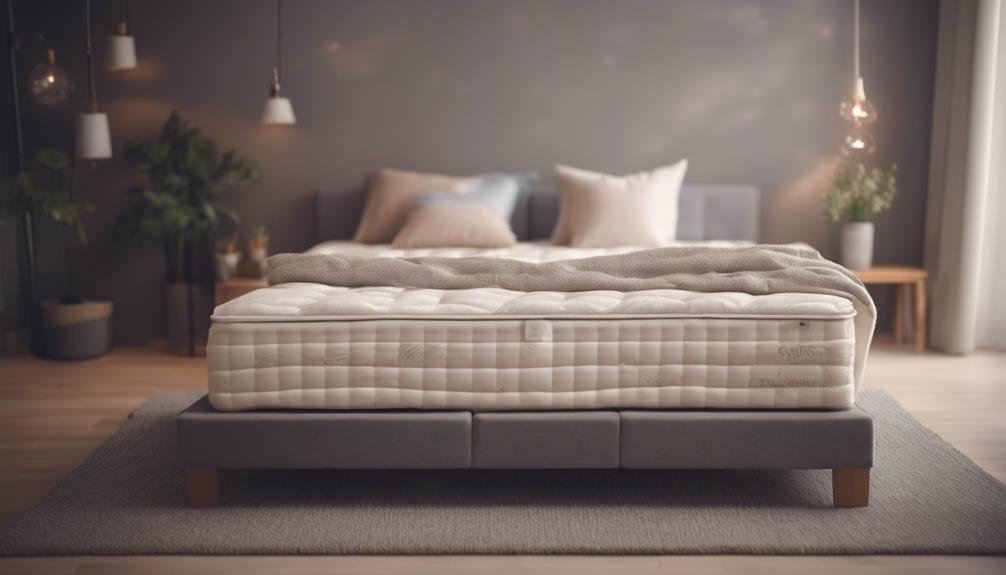
Enhancing comfort and support, a mattress topper can serve as a temporary sleeping solution in situations like temporary living arrangements or unexpected guests. When opting to sleep on a topper rather than a traditional mattress, it's crucial to take into account the level of support it offers.
While mattress toppers can improve comfort, they may not provide the same level of spinal support as a standard mattress, particularly if the topper is too soft. To guarantee better spinal alignment, consider choosing a firm mattress topper made from materials like latex or memory foam. These firmer toppers can help prevent aches and pains that may arise from inadequate support.
For maximum comfort when using a topper as a mattress, select one with a minimum depth of 5cm. While using a mattress topper as a mattress can be a convenient short-term solution, it's important to be mindful of potential long-term impacts on comfort and support.
Risks of Using a Mattress Topper Long-Term
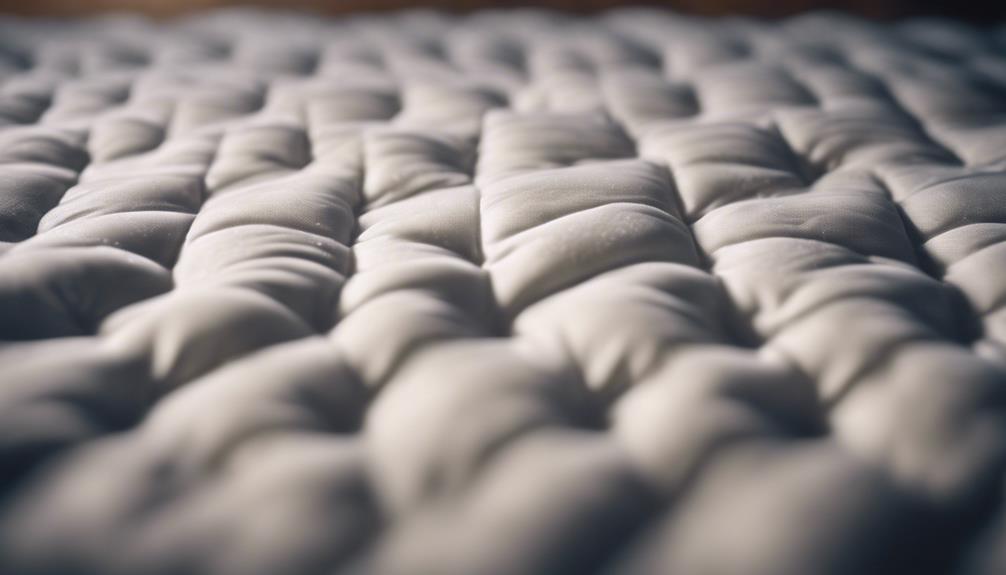
Taking into account a mattress topper long-term may compromise spinal support, leading to potential discomfort and posture issues.
Additionally, the longevity of mattress toppers is shorter compared to standalone mattresses, affecting their ability to provide adequate support over time.
It's crucial to weigh these factors when deciding whether to rely solely on a mattress topper for an extended period.
Health Implications of Long-Term Use
Long-term reliance on a mattress topper may compromise essential spinal support and pressure relief, posing potential health risks over time.
While a mattress topper can provide some comfort initially, extended use could lead to inadequate support for the spine compared to a traditional mattress.
The limited pressure relief offered by a topper may not effectively cushion areas like the shoulders, hips, and back, potentially causing discomfort in the long run.
Additionally, the durability of a mattress topper is generally shorter than that of a standalone mattress, which could impact its ability to maintain support over time.
As a result, depending solely on a mattress topper for an extended period may not be conducive to optimal spinal health and overall well-being.
Impact on Mattress Lifespan
To prolong the lifespan of your mattress and avoid potential issues, consider the implications of relying solely on a mattress topper for an extended period.
Long-term use of a mattress topper can actually reduce the lifespan of your mattress. When used as a standalone bed, it may even void warranties on both the topper and the mattress.
Continual pressure on the mattress topper can lead to problems like indentations and diminished support over time. Without the necessary support of a mattress underneath, the topper may wear out faster and lose its effectiveness.
It's advisable to use a mattress topper as intended – to enhance comfort on an existing mattress rather than as a long-term replacement.
Physical and Health Considerations
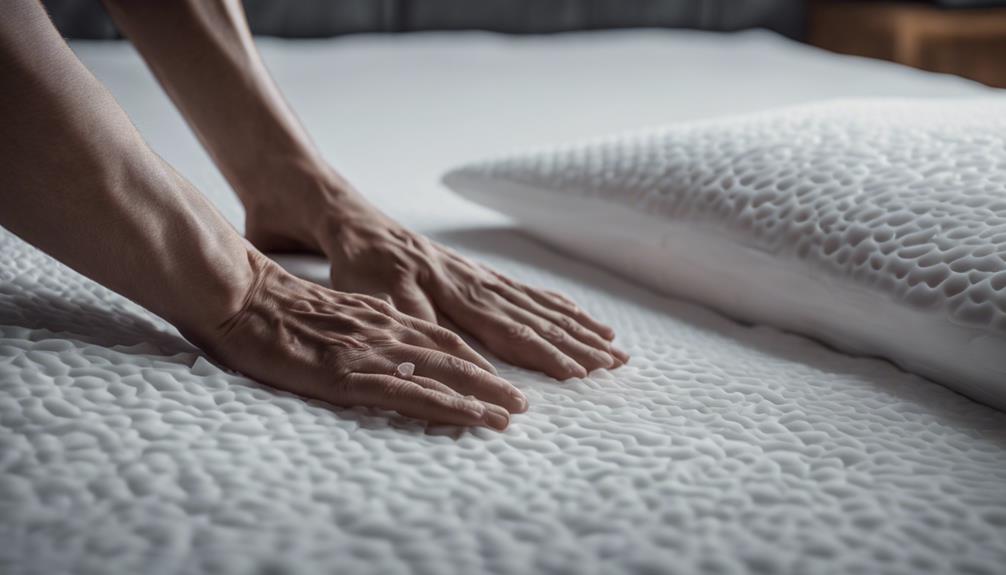
Considering physical and health factors is essential when deciding to exclusively use a mattress topper for sleeping. Here are some key points to keep in mind:
- Sleeping close to the floor may exacerbate allergies due to dust mites and mold accumulation.
- Individuals with chronic pain or mobility issues may require specific mattress support for comfort.
- Temperature regulation can be challenging when sleeping on a topper directly on the floor.
- Health conditions like anemia or hypothyroidism can impact sensitivity to cold temperatures.
- Consulting a healthcare provider is recommended to assess whether using a topper meets physical needs.
Taking into account these factors is vital to make sure that using only a mattress topper aligns with your physical requirements and overall well-being. It's important to prioritize your health and comfort when making decisions about your sleep environment.
Cultural and Lifestyle Reasons for Using a Topper
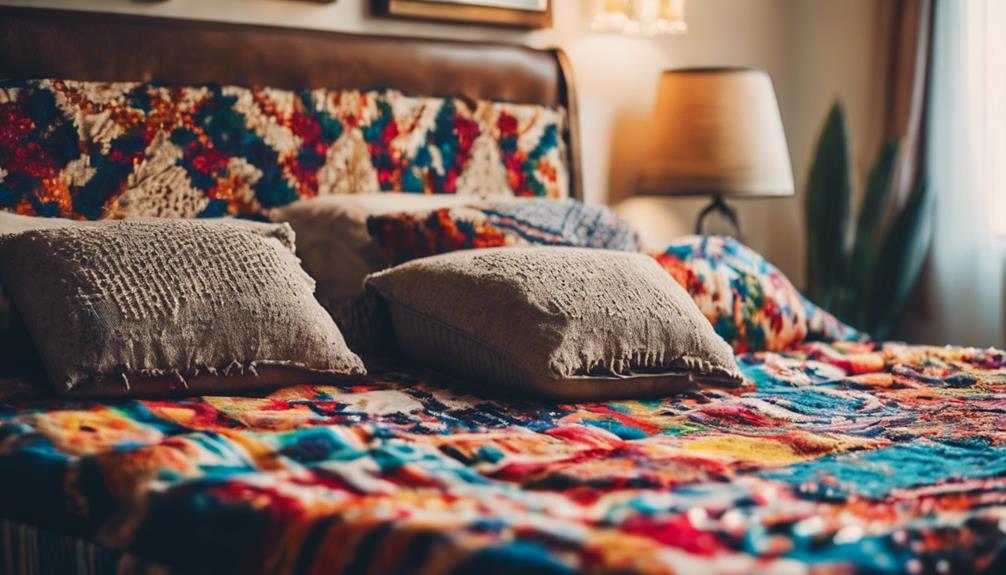
When exploring the reasons for opting for a mattress topper, cultural preferences and lifestyle choices play a significant role in determining one's sleep setup. Some cultures around the world still prefer thinner and firmer beds or even sleeping directly on the floor, which makes mattress toppers a popular choice to add comfort and support to these setups.
Additionally, individuals embracing a minimalist lifestyle often opt for mattress toppers to reduce possessions and promote sustainability. For those who frequently move or travel, mattress toppers are convenient for temporary living situations. DIY enthusiasts also use mattress toppers creatively by layering them to create a customized sleeping experience or as a budget-friendly alternative to a traditional mattress.
Furthermore, eco-conscious consumers choose organic latex mattress toppers for their sustainability benefits, aligning with their environmental values. These cultural and lifestyle factors showcase the versatility and practicality of using mattress toppers in various sleeping arrangements.
Additional Factors to Consider
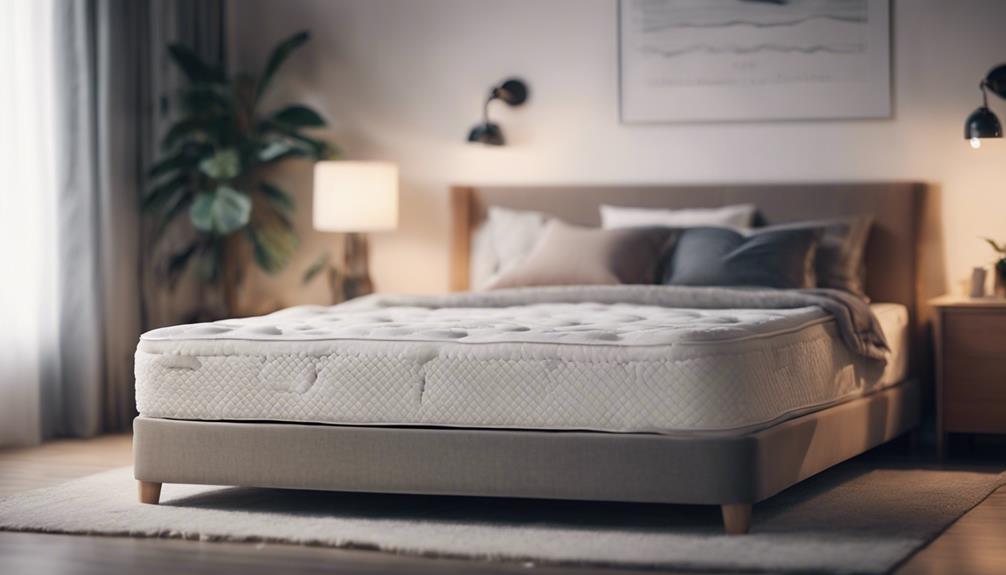
We must carefully evaluate the thickness and material of a mattress topper to guarantee excellent support and comfort for a restful night's sleep. When considering the use of a mattress topper, several additional factors play an important role in determining its effectiveness:
- Thickness: The thickness of the topper, typically ranging from 2 to 4 inches, can have a substantial impact on the level of support and comfort it provides.
- Material: The material of the topper, such as memory foam or latex, is vital in determining its ability to conform to the body and relieve pressure points.
- Surface: The surface on which the topper is placed influences its performance, with firm and flat surfaces being ideal for maximizing its benefits.
- Weight and Sleeping Position: The suitability of using a mattress topper as a standalone option can vary based on an individual's weight and preferred sleeping position.
- Enhanced Experience: Puffy Mattress Toppers are renowned for their luxurious comfort and support, enhancing the overall sleeping experience.
Frequently Asked Questions
Can a Mattress Topper Be Used Alone?
Yes, a mattress topper can be used alone if it's thick enough, typically ranging from 2 to 4 inches. The material, like memory foam or latex, is important for providing support. Placement on a suitable surface is vital for functionality.
Comfort and support levels may vary based on weight and sleeping position. Puffy Mattress Toppers offer luxurious comfort and can be suitable for standalone use in certain situations.
Can You Use a Mattress Topper on Its Own?
We can use a mattress topper on its own if it's thick enough, preferably between 2 to 4 inches, and made of supportive memory foam or latex. Puffy Mattress Toppers are a good choice as they offer comfort and support independently.
When considering standalone use, it's crucial to factor in weight, sleeping position, and desired firmness. This guarantees a restful night's sleep without the need for an additional mattress.
Can We Use a Mattress Topper Instead of a Mattress?
Yes, a mattress topper can be used as a temporary alternative to a mattress. Opt for a 2 to 4-inch thickness for proper cushioning.
Memory foam or latex toppers offer good body support. Consider the surface for placement.
Using a topper as a standalone bed depends on weight and sleeping position. Remember, long-term use mightn't provide adequate support like a traditional mattress.
Can You Sleep on a Mattress Topper Without a Sheet?
Without a sheet, sleeping directly on a mattress topper can expose it to sweat, dirt, and oils, leading to quicker wear and tear. This can reduce the topper's lifespan and make cleaning more challenging.
Using a sheet acts as a barrier against allergens, maintains hygiene, and adds comfort and warmth.
We recommend always using a sheet to protect your mattress topper and enhance your sleeping experience.
Conclusion
In conclusion, using just a mattress topper can provide added comfort and support, similar to how a warm blanket wraps around you on a cold night.
However, it's important to consider factors such as long-term risks, physical health, and personal preferences before deciding to use a topper on its own.
While there are benefits to using a mattress topper, it's essential to weigh the advantages and disadvantages to make an informed decision for your sleep quality.
Xavier – Your Operations Partner Xavier is your operations partner, working tirelessly behind the scenes to ensure that everything runs smoothly so you can enjoy a seamless experience with Perfect Fit Living. From managing inventory to coordinating logistics, he’s committed to making your experience with us hassle-free.
Mattress Toppers
Do You Sleep on a Mattress Topper
Transform your sleep experience with a mattress topper for enhanced comfort and support, but is it really the ultimate solution?
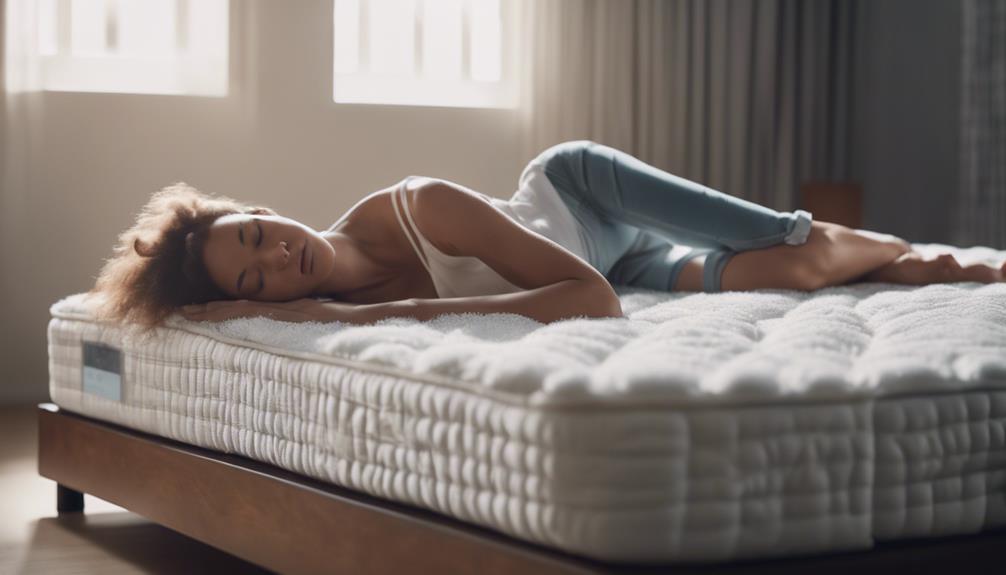
Yes, we sleep on a mattress topper. It can enhance comfort and support, but it's not a replacement for a mattress. Factors like chronic pain, material choice, and thickness are key. Toppers can offer important solutions for camping or guest beds. Health concerns, from allergies to temperature sensitivity, need attention. It's essential to consult healthcare professionals for tailored advice. If you seek more insights, explore the nuances of using a mattress topper for best sleep quality.
Key Takeaways
- Yes, you can sleep on a mattress topper for added comfort.
- Toppers enhance sleep quality by providing cushioning and support.
- They are not a replacement for a mattress but offer extra comfort.
- Consider health conditions and allergies before sleeping directly on a topper.
- Toppers are versatile, portable, and cost-effective bedding options.
Factors to Consider Before Sleeping on a Mattress Topper
What factors should we consider before sleeping on a mattress topper to guarantee comfort and support?
When selecting a mattress topper, it's important to think about our specific needs. For individuals with chronic pain or mobility issues, choosing a topper that provides adequate support is essential for a good night's sleep. Memory foam or latex toppers can offer the necessary firmness to alleviate discomfort and promote better rest. Additionally, consider potential allergies, especially if sleeping close to the floor, as materials like feathers or polyester blends may trigger reactions in sensitive individuals.
Temperature control is another key aspect to ponder. Sleeping directly on the floor can impact how warm or cool we feel during the night. Certain mattress toppers, like those made of breathable materials, can help regulate temperature and enhance overall comfort. Consulting healthcare professionals can also provide valuable insights tailored to our individual physical requirements, ensuring that the mattress topper chosen is the best fit for our unique circumstances.
Using Mattress Topper on the Floor
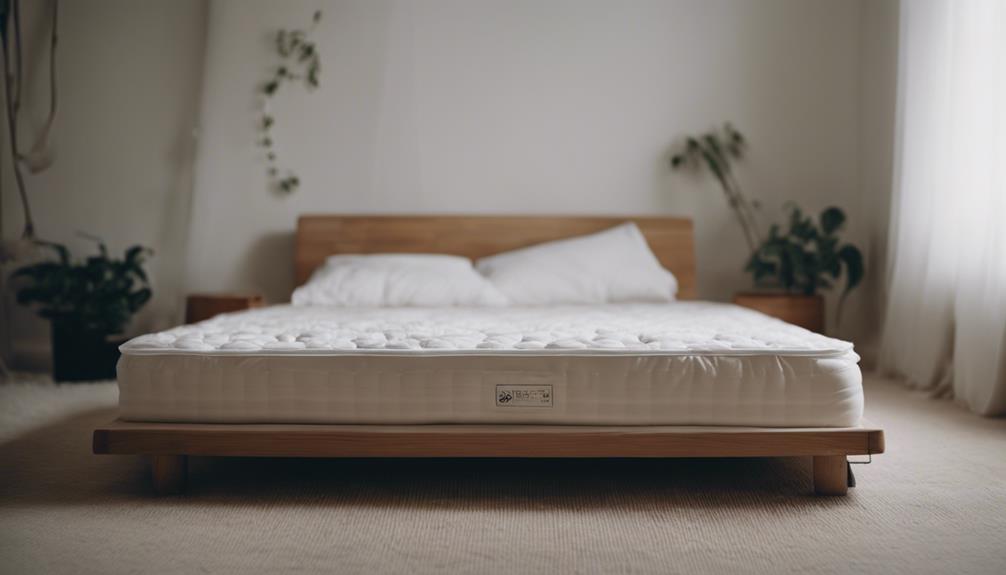
Using a mattress topper on the floor can enhance comfort and insulation levels for sleeping.
It's important to contemplate regular maintenance and care routines to guarantee hygiene and longevity.
The type of flooring underneath can also impact the overall experience.
Floor Mattress Toppers
Placing a mattress topper directly on the floor can enhance insulation and comfort levels for a restful night's sleep. When utilizing a mattress topper on the floor, it's crucial to take into account hygiene and maintenance practices. The type of floor can also impact overall comfort. To help you understand the benefits of using a mattress topper on the floor, we've prepared the following table comparing different options, including Puffy mattress toppers:
| Mattress Topper Brand | Insulation Level | Comfort Level |
|---|---|---|
| Puffy | High | Excellent |
| Other Brands | Varies | Varies |
Benefits of Using
When placing a mattress topper directly on the floor, one can experience enhanced insulation and comfort levels for a better rest. The additional layer provided by the mattress topper helps in creating a barrier between the sleeper and the floor, leading to improved comfort while sleeping.
This setup also offers better insulation, especially on colder surfaces, ensuring a cozy sleep environment. However, it's important to maintain proper hygiene practices when using a mattress topper on the floor to prevent dust accumulation and maintain cleanliness.
Additionally, the type of floor can impact the overall comfort level, with softer surfaces generally offering better support. By utilizing a mattress topper on the floor, individuals can enhance their sleeping experience by combining comfort, insulation, and hygiene.
Maintenance and Care
For maintaining a mattress topper when placed directly on the floor, regular upkeep tasks such as vacuuming, spot cleaning, and airing it out are crucial. To prevent damage, make sure the floor is clean, dry, and free from sharp objects. Using a mattress protector or cover can safeguard the topper from dust, dirt, and spills while on the floor.
It's recommended to rotate and flip the mattress topper periodically to promote even wear and increase longevity. Enhance airflow and prevent moisture buildup by considering a breathable rug or mat underneath the mattress topper. By following these maintenance tips, you can guarantee that your mattress topper remains in good condition and provides a comfortable sleeping surface even when placed directly on the floor.
Benefits of Sleeping on a Mattress Topper
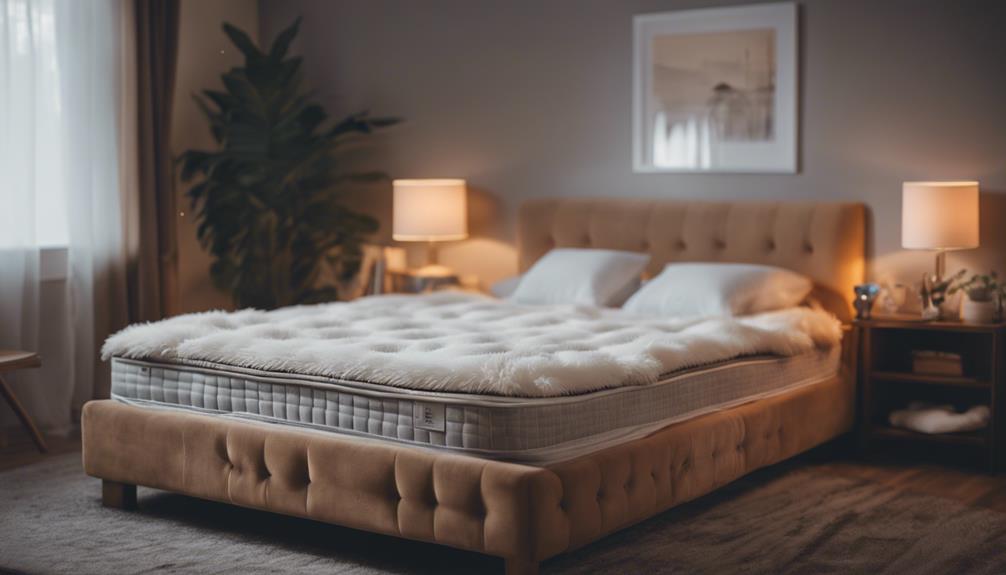
Sleeping on a mattress topper offers enhanced comfort levels, improved spinal alignment, and can prolong your mattress's lifespan.
By adding a topper, we can optimize our sleeping experience and wake up feeling more refreshed.
These benefits contribute to a better night's rest overall.
Enhanced Comfort Level
Using a mattress topper can greatly enhance the comfort level of your bed, providing a luxurious sleeping experience at an affordable cost. These toppers offer customizable firmness levels, allowing you to tailor your sleeping surface to your liking. They're a budget-friendly option compared to purchasing a new mattress, making them a practical and cost-effective solution.
Mattress toppers are also portable for travel, easily rolled up and stored for use in guest accommodations or while on the go. If you have an old or uncomfortable mattress, adding a mattress topper can transform it into a more comfortable sleeping surface, giving you the restful sleep you deserve. Consider investing in the best mattress topper for an improved comfort level at a fraction of the cost of a new mattress.
Improved Spinal Alignment
Improving spinal alignment with a mattress topper involves providing additional support and contouring to the body. This can have a significant impact on reducing back pain, stiffness, and discomfort, ultimately enhancing overall sleep quality.
Specifically, memory foam mattress toppers are renowned for their ability to conform to the body's shape, promoting better spinal alignment. The contouring effect of these toppers helps alleviate pressure points, allowing for a more restful night's sleep.
Prolongs Mattress Lifespan
When considering the benefits of a mattress topper, it becomes evident that one significant advantage is the ability to prolong the lifespan of your mattress. A mattress topper acts as an additional layer of protection, shielding your mattress from everyday wear and tear.
By absorbing pressure and minimizing direct damage, the topper helps maintain the integrity of the mattress, extending its usability. Rotating and flipping the mattress topper regularly can further distribute weight evenly, reducing strain on specific areas of the mattress and enhancing its longevity.
Additionally, using a mattress topper creates a barrier that safeguards your mattress against spills, stains, and body oils, promoting cleanliness and hygiene. Sleeping on a mattress topper not only enhances comfort but also safeguards your mattress investment by preserving its quality over time.
Considerations for Sleeping on a Mattress Topper
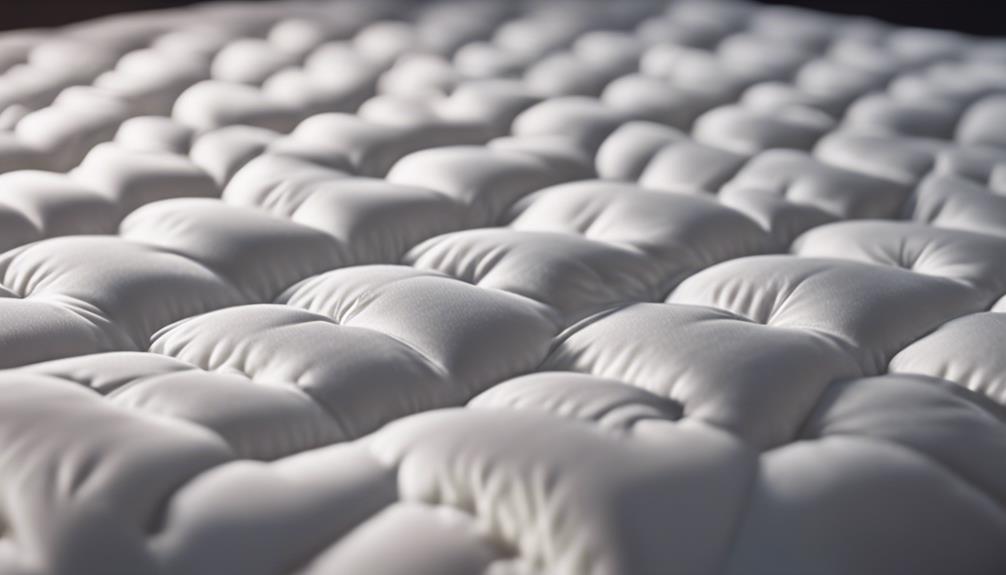
Enhancing your sleep experience with a mattress topper involves considering key factors to guarantee maximum comfort and support.
- Opt for a firm mattress topper: Choosing a firm topper can provide better spinal support, helping to alleviate aches and pains that may result from sleeping on a softer surface.
- Consider the material: Latex or memory foam toppers are popular choices for their ability to conform to your body shape, providing a comfortable and supportive sleeping surface.
- Check the depth: A minimum depth of 5cm is recommended for adequate comfort. This thickness can help prevent you from feeling the underlying firm mattress and ensure a more cushioned feel throughout the night.
When using a mattress topper for temporary sleeping arrangements, such as camping trips or accommodating unexpected guests, these considerations become even more essential. These factors play a significant role in making sure that your sleep quality isn't compromised, and you wake up feeling rested and rejuvenated.
Can a Mattress Topper Replace a Mattress?
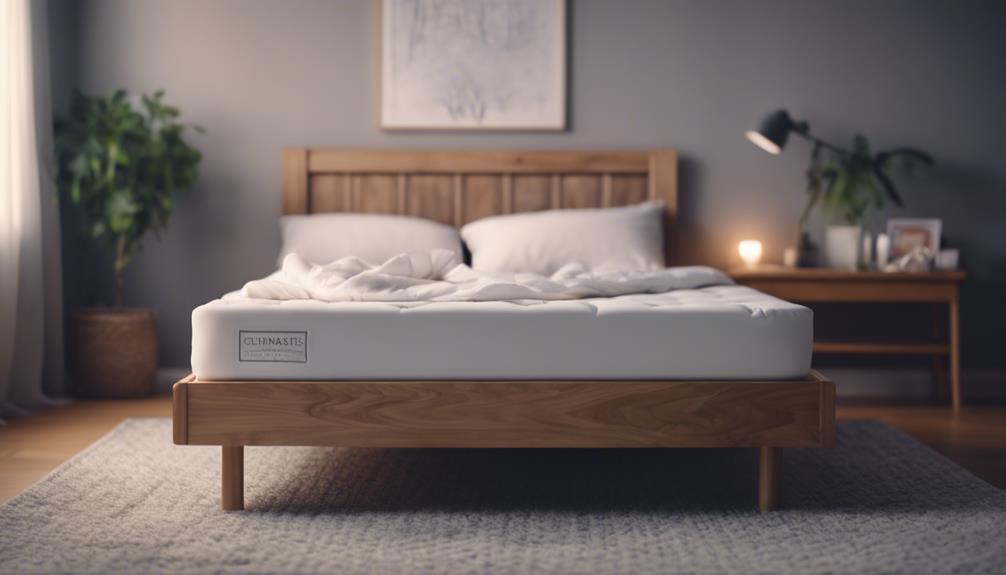
While mattress toppers can enhance the comfort and support of an existing mattress, they aren't intended to fully replace a mattress. Long-term use of a mattress topper as a standalone bed may result in aches, pains, and inadequate spinal support, potentially voiding warranties.
For better spinal alignment, opt for a firm mattress topper made of materials like latex or memory foam. The minimum recommended depth for a mattress topper to offer adequate comfort as a bed is around 5cm.
While mattress toppers can serve as a short-term solution in specific situations, they may not provide the same level of support and durability as traditional mattresses. When considering whether to use a mattress topper as a replacement for a mattress, it's important to prioritize proper spinal alignment and overall comfort.
Traditional mattresses are designed to offer thorough support and longevity, aspects that mattress toppers, despite their benefits, may not fully replicate.
Advantages of Using a Mattress Topper as a Bed
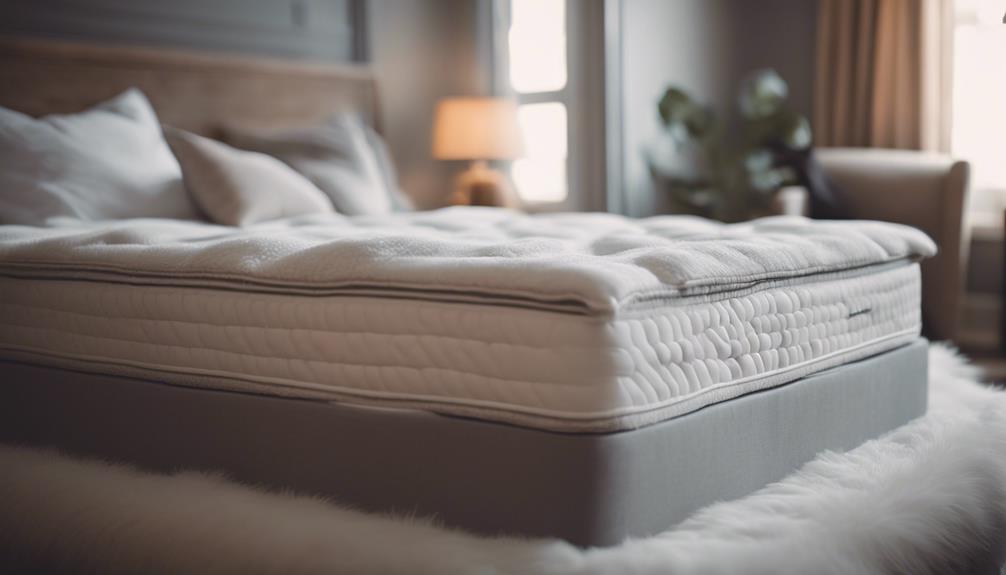
Using a mattress topper as a bed offers a cost-effective and versatile solution for enhancing comfort and support without the need to purchase a new mattress.
Here are three advantages of using a mattress topper in place of a traditional mattress:
- Enhanced Comfort: Mattress toppers can add an extra layer of cushioning to your bed, providing a more comfortable sleeping surface that can help improve your overall sleep quality.
- Portability: Unlike bulky mattresses, mattress toppers are lightweight and easy to move, making them ideal for travel or accommodating guests. Their portability adds convenience and flexibility to your bedding options.
- Environmentally Friendly: Opting for a mattress topper instead of a new mattress can help reduce waste in landfills. By extending the lifespan of your current mattress through the use of a topper, you contribute to a more sustainable and eco-friendly bedding solution.
Using a mattress topper as a bed not only enhances your sleep experience but also offers practical benefits such as portability and environmental consciousness.
Health Considerations for Sleeping on a Mattress Topper

Sleeping on a mattress topper requires careful consideration of potential health implications, particularly for individuals sensitive to allergens and those with specific physical conditions.
Mattress toppers placed close to the floor can worsen allergies due to dust mites and mold accumulation. For those with chronic pain or mobility issues, ensuring proper mattress support is essential for comfort when using a mattress topper as a bed.
Temperature regulation may pose a challenge when sleeping directly on a mattress topper on the floor, affecting sleep quality. Health conditions such as anemia or hypothyroidism can heighten sensitivity to cold temperatures while using a mattress topper.
It's advisable to consult a healthcare provider to evaluate whether using a mattress topper aligns with specific physical and health needs. Prioritizing these considerations can help optimize sleep quality and overall well-being when incorporating a mattress topper into your bedding setup.
Frequently Asked Questions
Can You Sleep Directly on a Mattress Topper?
We can sleep directly on a mattress topper, but it might lack the support and comfort of a traditional mattress. Factors like thickness, material, and surface affect its suitability.
Puffy Mattress Toppers offer comfort and support, yet may not suit everyone as a standalone option. Insulation, hygiene, and floor type influence comfort.
Consider weight, sleeping position, and spinal support needs when opting for a mattress topper for sleep.
Is It Better to Sleep Without a Mattress Topper?
We find that sleeping without a mattress topper offers a firmer surface, potentially improving spinal alignment and airflow for better temperature regulation. It can provide a more traditional sleeping experience and simplify bed maintenance.
What Is the Point of a Mattress Topper?
We use mattress toppers to enhance comfort, support, and temperature regulation. It adds cushioning, pressure relief, and body contouring to the existing mattress.
Toppers are great for temporary or travel living situations where a traditional bed isn't available. They're a budget-friendly alternative to buying a new mattress.
Different types like memory foam and feathers cater to varied preferences and needs, making them a versatile bedding solution.
How Soon Can I Sleep on My Mattress Topper?
We can sleep on a mattress topper immediately after placing it on the mattress. It's important to let the topper expand and air out for a few hours before use. Some toppers might have a slight initial odor, which usually fades with time.
Following the manufacturer's instructions, if available, can provide specific recommendations on the best timing for using the topper. Enjoy the extra comfort and support of the topper right away.
Conclusion
To sum up, sleeping on a mattress topper can provide added comfort and support to your sleep experience. According to a study by the National Sleep Foundation, using a mattress topper can improve overall sleep quality by reducing pressure points and promoting better spinal alignment.
Consider the benefits and factors mentioned in this article before deciding if a mattress topper is the right choice for you.
Xavier – Your Operations Partner Xavier is your operations partner, working tirelessly behind the scenes to ensure that everything runs smoothly so you can enjoy a seamless experience with Perfect Fit Living. From managing inventory to coordinating logistics, he’s committed to making your experience with us hassle-free.
Mattress Toppers
Why Does My Gel Mattress Topper Smell
Uncover the mysterious origins of your gel mattress topper's odor and discover surprising ways to eliminate it.
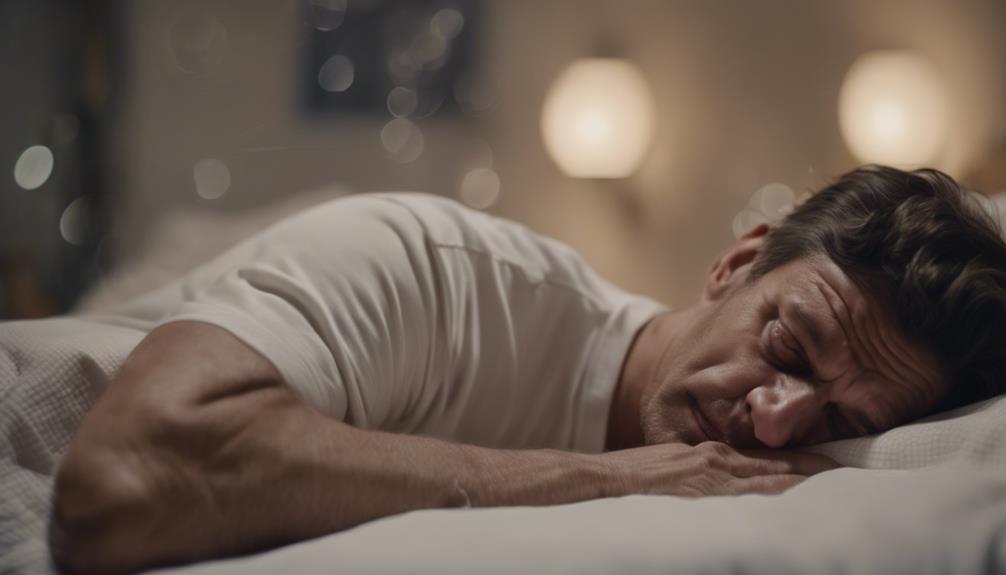
Gel mattress toppers smell due to materials and chemicals in gel memory foam, causing off-gassing of VOCs. Ventilate well for odors to fade. A mattress protector can help. Off-gassing is from VOC breakdown like formaldehyde. Use CertiPUR-US toppers for fewer VOCs. Cleaning with baking soda or vinegar helps. Essential oils and regular cleaning can mask and prevent odors. Ventilation is essential. Proper care and CertiPUR-US help. There are ways to neutralize and minimize odors. Follow tips and solutions for a fresher topper. Maintain cleanliness for a pleasant sleeping environment. Learn more about keeping your gel topper odor-free.
Key Takeaways
- Gel mattress toppers emit initial odors from materials used.
- Off-gassing of VOCs like formaldehyde causes temporary smells.
- Proper ventilation helps dissipate odors over time.
- Selecting CertiPUR-US certified toppers may reduce smell impact.
- Cleaning with baking soda or vinegar can help eliminate odors.
Reasons for Gel Mattress Topper Odor
Gel mattress toppers may emit odors for various reasons related to the materials used during manufacturing. The chemical compounds present in gel memory foam can lead to the initial smell that some users notice. Off-gassing of volatile organic compounds (VOCs) is a common cause of odor in gel toppers. These VOCs are released into the air as the topper adjusts to its new environment.
Thankfully, odors from gel mattress toppers typically dissipate over time with proper ventilation. Allowing the topper to air out can help speed up this process. Additionally, using a mattress protector can be beneficial. A protector acts as a barrier between the topper and the environment, which can help minimize and prevent lingering smells.
Regular cleaning of the topper and the protector can also aid in keeping the topper fresh. By taking these steps, you can enjoy the comfort of your gel mattress topper without being bothered by unwanted odors.
Understanding Off-Gassing in Gel Toppers
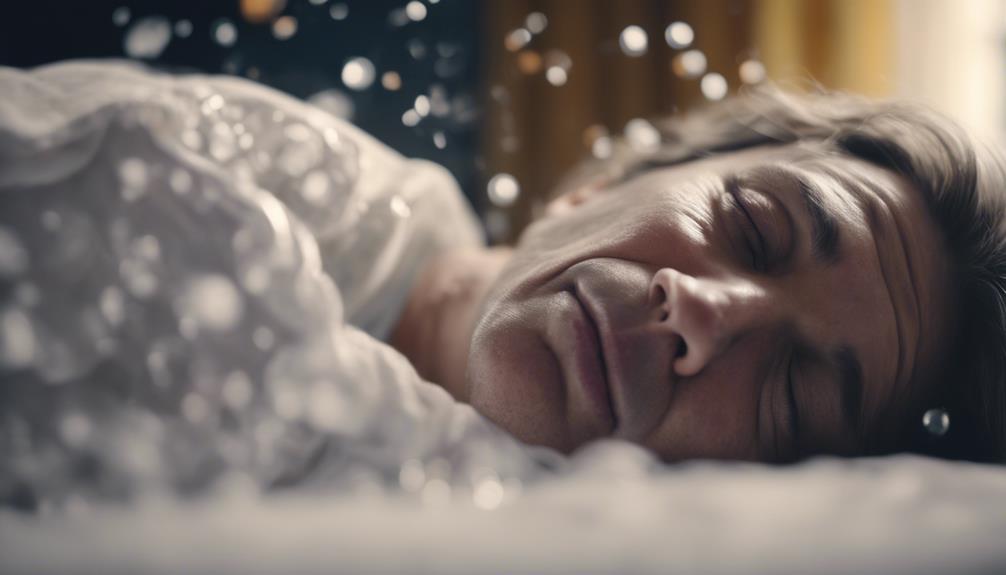
When dealing with off-gassing odors in gel mattress toppers, it becomes essential to understand the breakdown of volatile organic compounds (VOCs) and their release into the air.
Gel mattress toppers can emit off-gassing odors as a result of VOCs like formaldehyde, toluene, and benzene breaking down and dispersing gases into the environment. To reduce or eliminate these odors, proper ventilation is crucial.
Allowing the topper to air out in a well-ventilated area can help dissipate the VOCs more quickly. Additionally, selecting a gel mattress topper that's CertiPUR-US certified can be beneficial. This certification ensures that the topper is made of safer materials with lower VOC emissions, potentially minimizing off-gassing odors.
Causes of Unpleasant Smells in Toppers
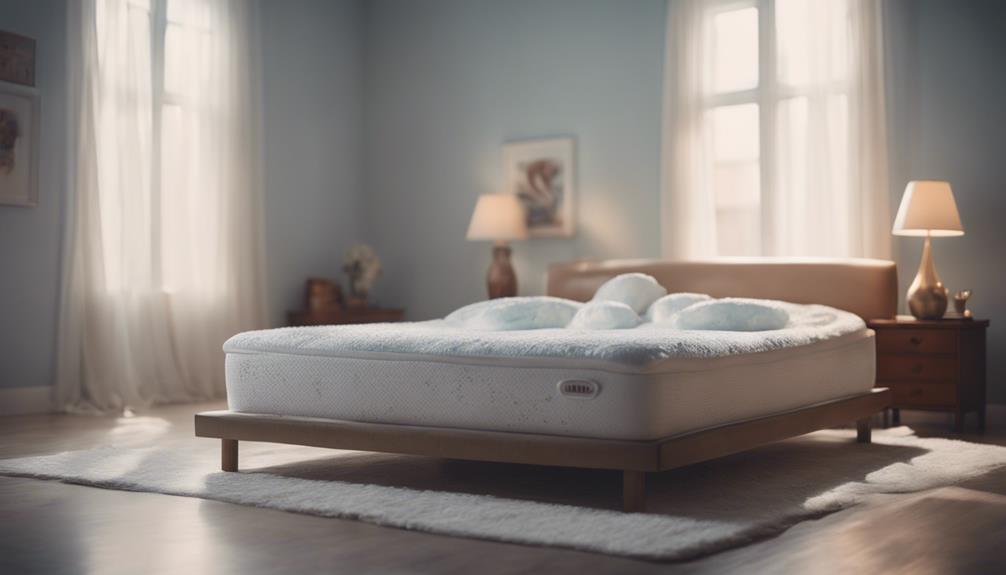
Unpleasant smells in gel mattress toppers can stem from the materials used in manufacturing, such as chemical compounds in gel memory foam and off-gassing processes. These factors contribute to the initial odor that users might notice.
Proper ventilation and airing out the topper can aid in reducing these smells over time.
Common Odor Sources
One common source of odor in gel mattress toppers stems from the chemical compounds present in the memory foam material used during production. These compounds can lead to off-gassing, releasing volatile organic compounds (VOCs) into the air, causing the initial smell. Factors contributing to the odor include:
- Chemical compounds in the gel memory foam
- Off-gassing of volatile organic compounds (VOCs)
- Initial odor that dissipates over time
- Proper ventilation aids in reducing the smell
It's essential to allow the gel mattress topper to air out and breathe, facilitating the dissipation of the odor. Opting for reputable brands can also help mitigate the intensity of the smell over time.
Solutions and Tips
Ventilating the room and allowing the gel mattress topper to air out can greatly reduce the persistent odors caused by the chemical compounds present in the memory foam material. Off-gassing from gel mattress toppers, which releases VOCs like formaldehyde, can be minimized by ensuring proper ventilation.
To aid in odor elimination, sprinkling baking soda on the topper and letting it sit before vacuuming can help neutralize smells. Additionally, choosing a gel mattress topper with CertiPUR-US certification can lower the chances of encountering unpleasant odors.
In case the smell persists, using vinegar or enzyme sprays may assist in further eliminating the odor. These solutions and tips can improve the overall air quality and comfort of your sleeping environment.
How VOCs Impact Gel Toppers
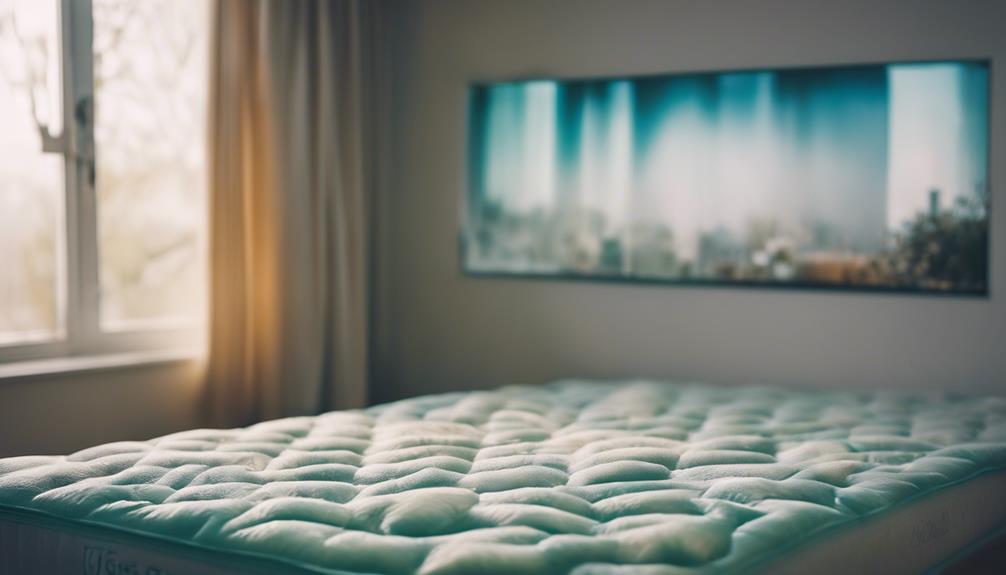
When considering how VOCs affect gel mattress toppers, it's important to understand their role in emitting off-gassing odors.
- VOCs, such as those found in gel mattress toppers, can lead to off-gassing odors.
- Exposure to these VOCs may cause temporary symptoms like headaches or nausea in some individuals.
- Proper ventilation is essential in reducing the impact of VOCs and diminishing off-gassing odors over time.
- Opting for a gel mattress topper with CertiPUR-US certification can help minimize exposure to harmful VOCs and decrease off-gassing odors.
Understanding the influence of VOCs on gel toppers is crucial for ensuring a comfortable and healthy sleep environment. By being aware of how these compounds can affect the initial odor of a new gel mattress topper, individuals can take proactive steps to mitigate any temporary symptoms and enjoy a restful night's sleep.
Tips to Eliminate Gel Topper Odor
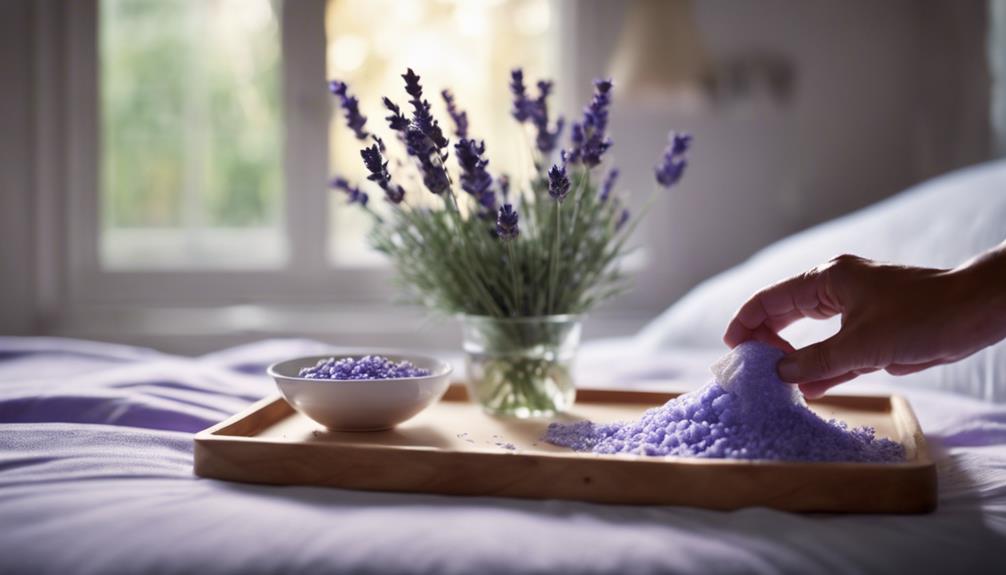
To combat the lingering odor from a gel mattress topper, practical solutions can help freshen the sleeping environment.
Start by airing out the gel mattress topper in a well-ventilated area to allow any trapped odors to dissipate. Cleaning the topper with baking soda or vinegar can also be effective in eliminating the smell.
Additionally, incorporating essential oils or using air fresheners can help mask any remaining odor from the gel topper, providing a more pleasant sleeping experience.
Remember that important care and maintenance, such as regular cleaning and ventilation, are vital in preventing odor buildup in gel mattress toppers.
Effective Odor Removal Methods
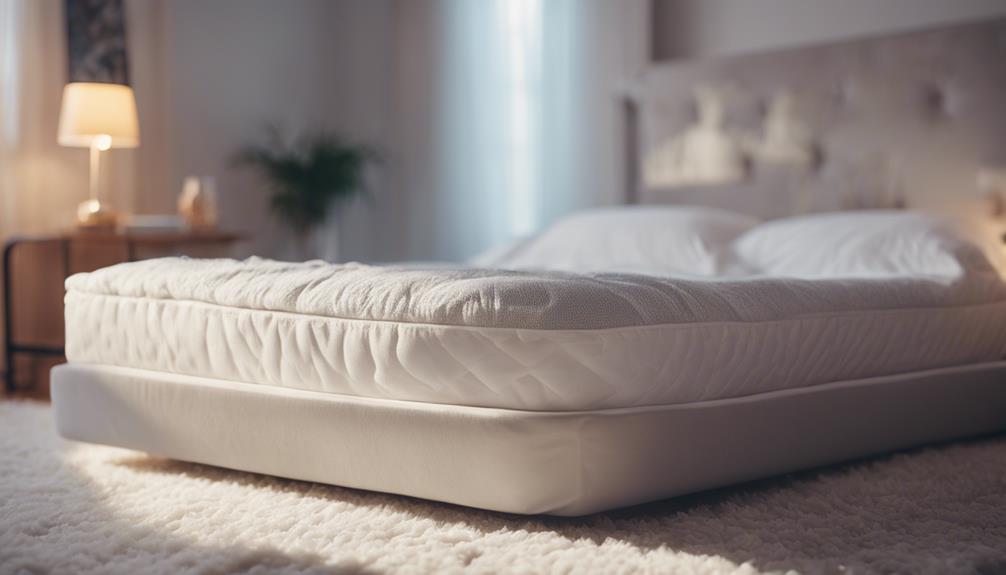
We've found that utilizing natural cleaning agents such as baking soda and vinegar can effectively eliminate odors from gel mattress toppers. When dealing with unwanted smells, consider these effective odor removal methods:
- Baking soda: Sprinkle baking soda generously over the topper and let it sit for a few hours to absorb odors before vacuuming it off.
- Vinegar: Mix equal parts of water and vinegar in a spray bottle, then lightly mist the topper and allow it to air dry to help neutralize odors.
- Ventilation: Increase airflow in the room by opening windows or using a fan to help dissipate odors from the gel mattress topper.
- Enzyme sprays: These sprays can break down organic matter causing odors, so look for enzyme-based cleaners specifically designed for mattress toppers.
Managing Smell in Gel Toppers
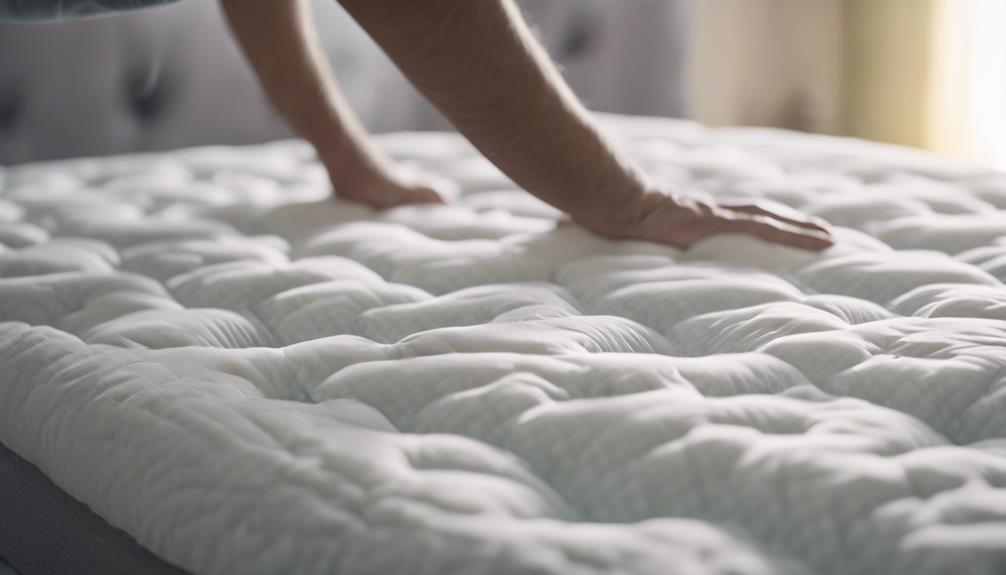
In addressing the issue of managing smell in gel toppers, it's crucial to understand the factors contributing to these odors and how to effectively mitigate them.
Gel mattress toppers may emit odors due to off-gassing from the materials used in their manufacturing process. To help reduce or eliminate these odors, allowing the gel topper to air out can be beneficial over time. Additionally, using household items like baking soda, vinegar, or essential oils can help neutralize lingering smells in gel mattress toppers.
When selecting a gel topper, opting for one with CertiPUR-US certification ensures that safer and lower odor emission materials are used in its production. By following these steps and choosing certified products, you can manage and minimize any unwanted odors that may arise from your gel mattress topper, creating a more pleasant sleeping environment.
Preventing Gel Topper Odors

When it comes to preventing gel topper odors, there are several effective techniques worth exploring. Proper ventilation methods, such as airing out the topper regularly, can help reduce any lingering smells.
Additionally, cleaning and maintenance with baking soda, vinegar, or enzyme spray can further eliminate odors and keep your gel topper fresh.
Odor Elimination Techniques
How can one effectively eliminate the unpleasant odors emitted by gel mattress toppers? Here are some techniques to help tackle those unwanted smells:
- Ventilation: Allow fresh air to circulate around the mattress topper to help reduce off-gassing odors.
- Baking Soda: Sprinkle baking soda over the topper, let it sit for a few hours, then vacuum it up to absorb odors.
- Vinegar: Mix equal parts water and vinegar in a spray bottle and lightly mist the topper to help neutralize odors.
- Enzyme Sprays: Use enzyme-based sprays designed to break down organic matter and eliminate odors effectively.
Cleaning and Maintenance
To prevent odors in gel mattress toppers, regular cleaning and maintenance are vital steps. Gel toppers may emit odors due to off-gassing from manufacturing chemicals.
Vacuuming the topper regularly helps eliminate dust and debris that can trap unwanted smells. Airing out the topper by placing it in a well-ventilated area can also reduce odors. Using baking soda on the topper and allowing it to sit before vacuuming can help neutralize any lingering smells.
It's important to avoid moisture buildup and spills on the topper, as these can contribute to odor development. Following the manufacturer's cleaning instructions and ensuring proper ventilation in the room can maintain a fresh-smelling gel mattress topper.
Proper Ventilation Methods
Implementing proper ventilation techniques is crucial in preventing unwanted odors from gel mattress toppers. To guarantee an odor-free sleeping environment, consider the following methods:
- Leave the gel topper in an open area to allow off-gassing and reduce smells.
- Use air fresheners, essential oils, or indoor plants to mask and absorb odors.
- Regularly wash bedding and use mattress protectors to prevent lingering smells.
- Maintain proper care of the gel mattress topper to uphold freshness.
Long-Term Gel Topper Odor Solutions
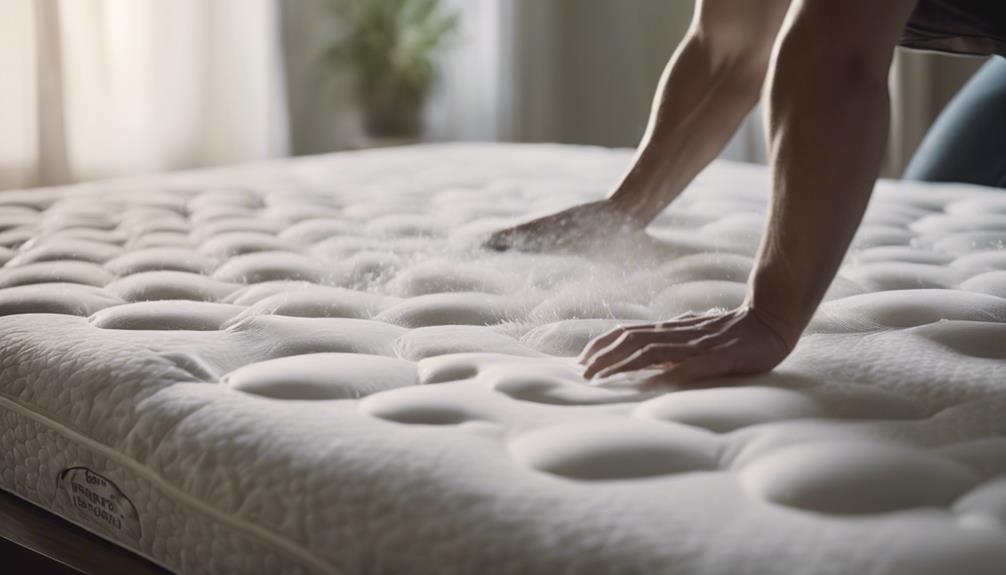
When addressing long-term gel topper odors, ventilating the topper in a well-ventilated space is an important initial step. Gel mattress toppers may emit odors due to the materials used, so proper ventilation can help dissipate these smells over time. Additionally, using baking soda or vinegar can be effective in neutralizing and eliminating lingering odors from gel mattress toppers. These household items are known for their odor-absorbing properties and can help freshen up the topper. Regularly washing and maintaining the topper is also vital in preventing odors from accumulating and becoming long-lasting.
Opting for a CertiPUR-US certified gel mattress topper can further assist in reducing chemical exposure and minimizing odors. This certification ensures that the topper meets specific standards for emissions, durability, and performance. By following these long-term odor solutions, you can enjoy a fresher and more pleasant sleeping environment with your gel mattress topper.
Frequently Asked Questions
How Do You Get the Smell Out of a Gel Mattress Topper?
To get the smell out of a gel mattress topper, air it out in a well-ventilated area for a few days.
You can also use baking soda, a vinegar-water mixture, or water with essential oils to neutralize odors.
Regular cleaning can prevent future smells.
Airing and using odor-neutralizing solutions effectively eliminate unwanted scents from gel mattress toppers.
Why Does My Mattress Topper Smell so Bad?
We comprehend the frustration of a smelly mattress topper. Off-gassing of VOCs in new gel toppers, containing chemicals like polyurethane, can cause strong odors.
Ventilating the room and airing out the topper can help diminish the smell over time. Opting for CertiPUR-US certified gel toppers guarantees safer materials and potentially reduces odor issues.
Rest assured, with patience and proper ventilation, the unpleasant smell should dissipate gradually.
Do Gel Mattresses Smell?
Gel mattresses can emit a slight odor due to the materials used. This smell, often described as chemical-like, is part of the off-gassing process common in memory foam products.
With proper ventilation, the odor typically fades over time. Opting for a reputable brand and allowing the topper to air out can help minimize the initial smell.
It's a normal occurrence that should improve with time and aeration.
How Do You Clean a Gel Topped Mattress?
When cleaning a gel-topped mattress, use a mild detergent and water for spot cleaning. Avoid soaking the topper to prevent damage. Regularly vacuum to remove dust and debris.
Consider a mattress protector for added cleanliness. Follow the manufacturer's cleaning guidelines for specific recommendations. Keep it simple and effective to maintain freshness and longevity.
Conclusion
To wrap up, it's noteworthy that gel mattress toppers often emit a smell due to off-gassing and VOCs.
To address this issue, ensure proper ventilation in the room, clean the topper cover, and utilize baking soda or vinegar to eliminate odors.
Studies have indicated that as many as 20% of individuals may be sensitive to VOCs, underscoring the importance of reducing exposure to these chemicals in household items.
Prioritize your well-being and comfort by managing and preventing odors from gel toppers.
Xavier – Your Operations Partner Xavier is your operations partner, working tirelessly behind the scenes to ensure that everything runs smoothly so you can enjoy a seamless experience with Perfect Fit Living. From managing inventory to coordinating logistics, he’s committed to making your experience with us hassle-free.
Mattress Toppers
How Much Is a Hastens Mattress Topper
Keen to uncover the luxurious pricing of Hästens Mattress Toppers? Find out the range and premium features that make them worth the investment.
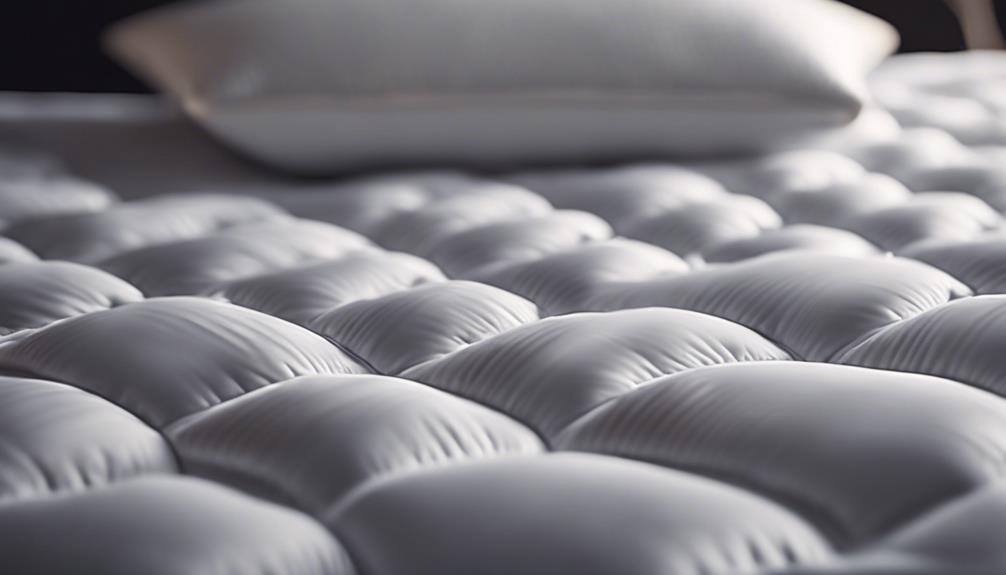
Hästens Mattress Toppers range from $1,395.00 to $5,990.00. The price depends on size, like Twin XL, Queen, or King, and filling options such as BJX Luxury. These toppers boast premium materials and are crafted for ultimate comfort. Factors like material quality and customization affect the cost. For a truly luxurious experience, consider A-lyx horsetail hair. Understanding these details helps in making an informed choice within your budget. Investing in a Hästens Topper guarantees unmatched sleep quality and durability. To discover more about Hästens Toppers, explore further details on their benefits and construction.
Key Takeaways
- Hästens Mattress Toppers range from $1,395.00 to $5,990.00.
- Pricing varies based on size options like Twin XL, Full, Queen, King, or Cal King.
- Filling options like BJX Luxury, BJX, or BJ impact the final price.
- Premium quality materials like A-lyx horsetail hair contribute to cost.
- Handcrafted in Sweden, ensuring luxurious comfort and support.
Hästens Mattress Topper Pricing Overview
Offering a range of options for different budgets, Hästens Mattress Toppers are priced between $1,395.00 to $5,990.00. The pricing of these luxurious toppers varies depending on factors such as size and type, including options like Twin XL, Full, Queen, King, or Cal King. Additionally, customers can select from different filling options such as BJX Luxury, BJX, or BJ, each contributing to the overall cost of the topper.
The cost of Hästens Mattress Toppers reflects the premium quality materials and craftsmanship utilized in their production. These toppers are designed to provide an unparalleled level of comfort and support for a restful night's sleep. By investing in a Hästens Mattress Topper, customers can expect to elevate their sleep experience with a durable and high-end bedding accessory that's built to last. The blend of luxury, high-quality materials, and expert craftsmanship ensures that Hästens Mattress Toppers deliver on both quality and comfort.
Factors Affecting Hästens Topper Cost
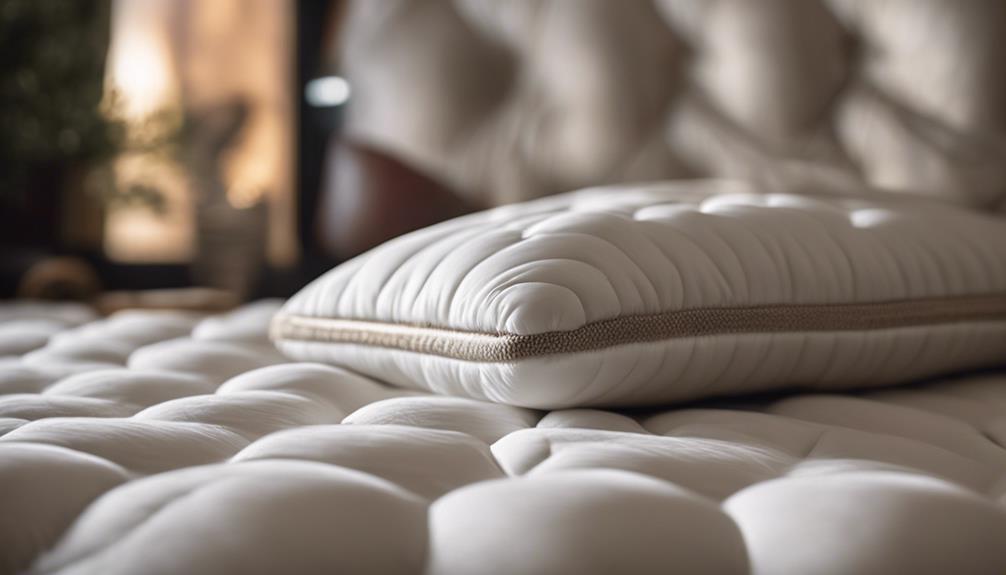
When considering the cost of a Hästens Mattress Topper, factors such as the material quality and customization options available play a significant role.
The type of natural filling used, as well as the size and specific model chosen, can impact the final price.
Understanding these factors can help in making an informed decision that aligns with both preferences and budget constraints.
Material Quality Impact
High-quality materials, such as A-lyx horsetail hair, have a considerable impact on the cost of Hästens mattress toppers. The luxurious feel and durability of Hästens toppers are attributed to the use of natural materials like horsetail hair, wool, and cotton.
For instance, the BJX Luxury mattress topper, filled with cotton, wool, and premium A-lyx horsetail hair, showcases the brand's commitment to quality. Crafted in Sweden, Hästens toppers are known for their handcrafted excellence, further contributing to their pricing.
Investing in a Hästens mattress topper with superior materials not only enhances comfort but also extends the longevity of your bed, providing a truly luxurious sleep experience.
Customization Options Available
Customization options greatly impact the cost of Hästens mattress toppers, ranging from $1,395.00 to $5,990.00 based on factors like size and filling material. Customers can select from sizes such as Twin XL, Full, Queen, King, and Cal King, tailoring the topper to fit their bed perfectly. The filling material also plays a significant role in the price, with options like BJX Luxury, BJX, and BJ. For instance, the BJX Luxury topper, containing cotton, wool, and A-lyx horsetail hair, falls on the higher end of the price spectrum due to its luxurious materials. These customization choices allow individuals to personalize their Hästens mattress topper experience while understanding the premium pricing associated with these handcrafted Swedish products.
| Size | Filling Material | Price Range |
|---|---|---|
| Twin XL | BJX | $1,395.00 |
| Queen | BJX Luxury | $5,990.00 |
| King | BJ | $3,750.00 |
Customization Options and Pricing
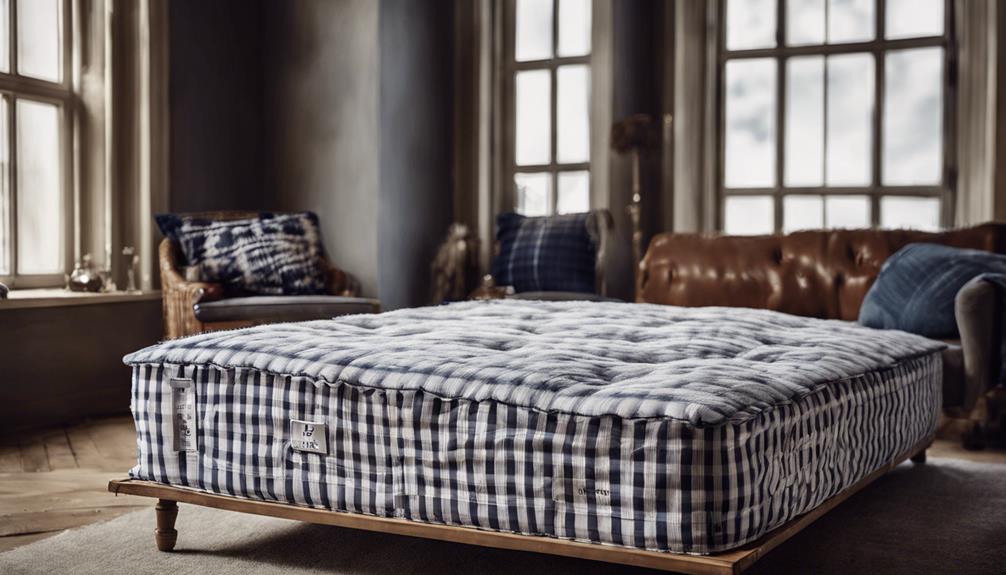
With a price range spanning from $1,395.00 to $5,990.00, Hästens Mattress Toppers offer a variety of customization options to cater to individual preferences. These luxury toppers are designed for ultimate comfort, ensuring a restful night's sleep.
The pricing of Hästens Mattress Toppers varies based on the size and specific model chosen. Customers can select from different sizes such as Twin XL, Full, Queen, King, and Cal King to suit their needs. Each size comes with its own price point, allowing for customization within budget constraints.
The Hästens Mattress Toppers are crafted with the finest materials to provide a luxurious sleeping experience. By offering customization options and a range of prices, Hästens caters to a wide range of customers looking for top-quality comfort in their mattress toppers.
Understanding Hästens Topper Price Range
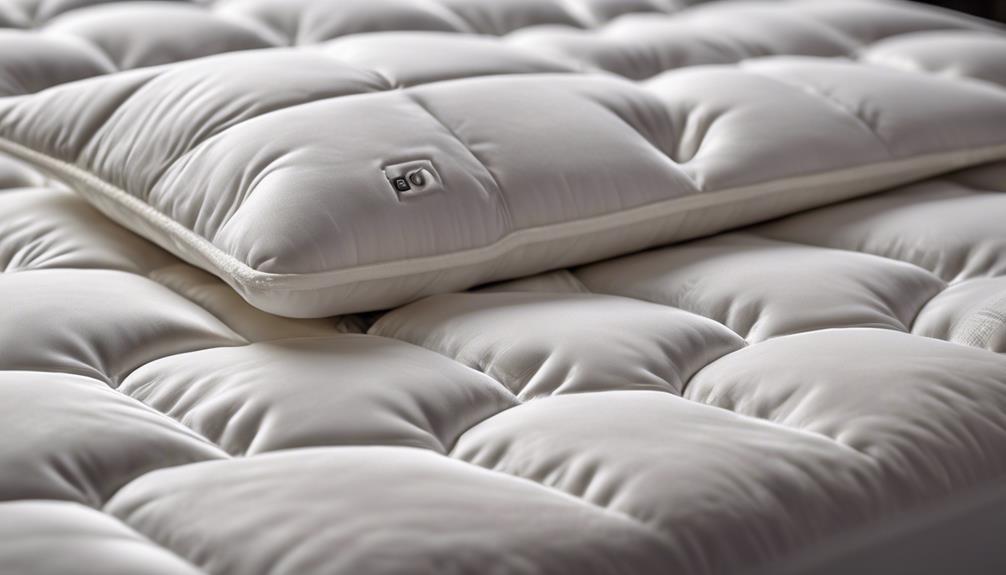
Hästens Mattress Toppers come in a price range of $1,395.00 to $5,990.00, depending on the size and filling material selected. Understanding the price range allows us to weigh the quality of the topper against the cost, ensuring we make an informed investment in our sleep comfort.
Comparing the various options available, such as the BJX Luxury, BJX, and BJ fillings, can help us find the right balance between price and luxury for our specific needs.
Pricing Variations
Discovering Hästens Mattress Toppers reveals a price range ranging from $1,395.00 to $5,990.00, showcasing the diverse options available. The pricing variations depend on factors like size, filling materials, and the luxurious quality associated with the Hästens brand.
Customers can select from a range of sizes including Twin XL, Full, Queen, King, and Cal King, catering to different bed dimensions. The higher-priced options often boast premium fillings such as cotton, wool, and top-tier A-lyx horsetail hair, ensuring a luxurious sleeping experience.
Hästens Mattress Toppers offer a spectrum of pricing options, allowing individuals to find a suitable match based on their preferences and budget constraints.
Quality Vs. Cost
When considering the price range of Hästens Mattress Toppers, the balance between quality and cost becomes an essential factor to evaluate. The price of these toppers varies from $1,395.00 to $5,990.00, showcasing options for different budgets. Hästens justifies the cost through the use of high-quality natural materials, ensuring durability, comfort, and an extended bed lifespan. The luxury associated with Hästens Mattress Toppers reflects the brand's commitment to exceptional sleep quality. Investing in one is investing in long-term sleep health and overall well-being. Below is a table highlighting the relationship between the price, quality, comfort, and luxury of Hästens Mattress Toppers:
| Price Range | Quality |
|---|---|
| $1,395.00 | High |
| $5,990.00 | Premium |
Value of Investing in Hästens Topper
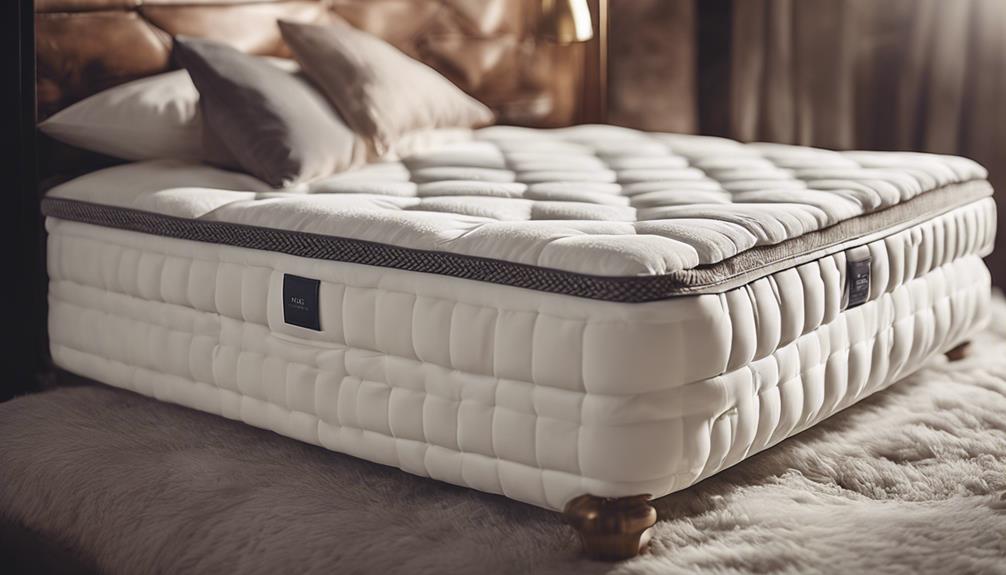
Investing in a Hästens Topper guarantees an unparalleled sleep experience with exceptional comfort, support, and durability. Crafted in Sweden with natural materials like horsehair, cotton, and wool, the topper guarantees breathability and temperature regulation for a restful night's sleep. The use of high-quality materials not only enhances comfort but also promotes longevity, making it a worthwhile investment for your bed. By adding a Hästens Topper to your mattress, you can prolong its lifespan and create a hygienic sleep environment.
Moreover, the superior support provided by the Hästens Topper can help alleviate pressure points and improve overall sleep quality. With regular maintenance and replacement every 5 to 7 years, you can continue to enjoy the benefits of this premium sleep accessory. When considering the value of investing in a Hästens Topper, it's crucial to prioritize both comfort and support for a truly rejuvenating sleep experience.
Budgeting for a Hästens Mattress Topper
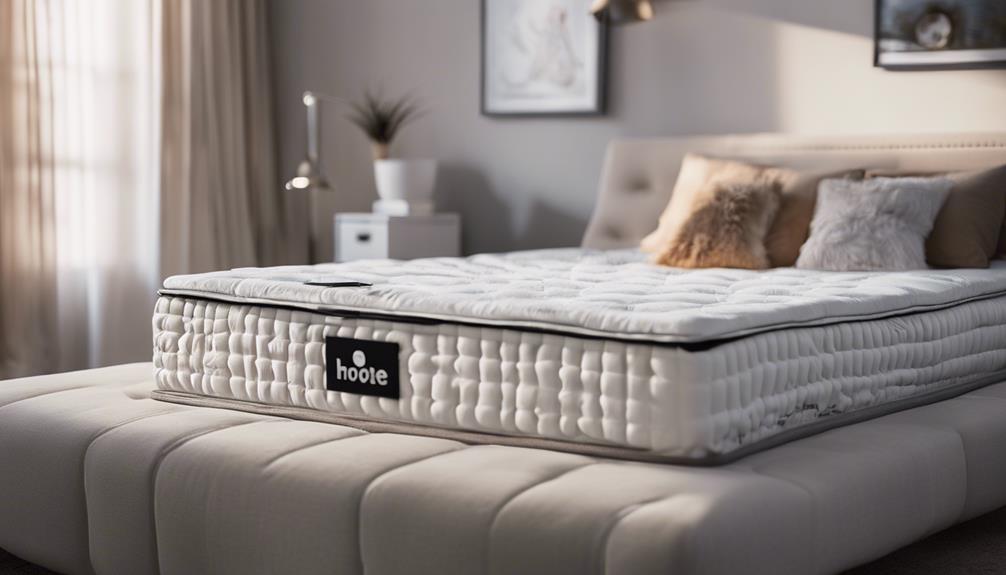
Given the range of prices for Hästens Mattress Toppers, it's important to carefully budget based on the desired size and specific filling materials to make an informed decision.
Hästens offers Mattress Toppers ranging from $1,395.00 to $5,990.00, with the BJX Luxury Top Mattress filled with cotton, wool, and A-lyx horsetail hair priced higher, between $6,190.00 to $7,590.00.
When budgeting for a Hästens Mattress Topper, one must consider the price range based on the size needed and the specific filling materials desired for the ultimate luxury sleep experience.
The price reflects the craftsmanship, natural materials, and quality that Hästens is renowned for, making it not just a purchase but an investment in better sleep and overall well-being.
Comparing Hästens Topper Prices
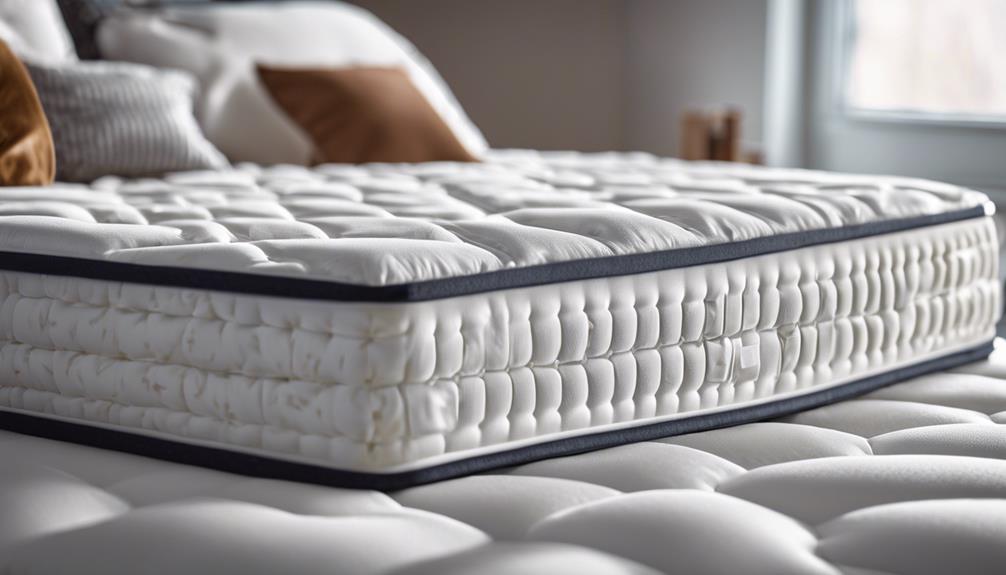
Comparing the prices of Hästens Mattress Toppers offers insight into the range of options available for different budget considerations. The price range for Hästens Mattress Toppers varies from $1,395.00 to $5,990.00, providing customers with a selection of options to choose from. For those seeking ultimate luxury, the BJX Luxury Top Mattress is available between $6,190.00 and $7,590.00. These varying price points cater to different preferences and financial capacities, ensuring that there's a Hästens Mattress Topper for everyone.
The pricing of Hästens Mattress Toppers is reflective of the quality materials and the handcrafted nature of the product. Each topper is meticulously crafted to provide exceptional comfort, support, and durability, enhancing the overall sleep experience. Customers can rest assured that they're investing in a product that isn't only luxurious but also made to the highest standards. When considering a Hästens Mattress Topper, the price range aligns with the premium quality and comfort that these toppers are known for.
Where to Buy Hästens Mattress Toppers

When looking to purchase Hästens Mattress Toppers, one can find them available directly from Hästens stores or authorized retailers. These luxury toppers are crafted in Sweden with the finest natural materials to guarantee quality and durability. Enhancing the longevity and comfort of your bed, Hästens Mattress Toppers offer ultimate luxury and comfort for a restful night's sleep. Here are some key points to keep in mind when buying Hästens Mattress Toppers:
- Hästens Mattress Toppers range in price from $1,395.00 to $5,990.00, depending on the specific model and size.
- You can purchase Hästens Mattress Toppers directly from Hästens stores or authorized retailers.
- Hästens Mattress Toppers are handcrafted in Sweden from the finest natural materials for quality and durability.
- The Mattress Toppers from Hästens offer ultimate luxury and comfort for a restful night's sleep.
- Hästens Mattress Toppers are designed to enhance the longevity and comfort of your bed, providing added softness and support.
Frequently Asked Questions
How Much Does a Hastens Cost?
Hästens Mattress Toppers come in a price range of $1,395.00 to $5,990.00. The cost varies depending on the size and features chosen. These toppers boast luxury and quality with natural materials.
While the price point is premium, they offer ultimate comfort and luxury. So, when looking at the cost of a Hästens Mattress Topper, consider the size and features you want for the best fit and comfort.
How Much Should You Pay for a Mattress Topper?
When looking at mattress toppers, it's important to take into account both comfort and durability. Prices can vary depending on the quality of materials and craftsmanship.
A Hästens mattress topper, with its premium options and handcrafted design, may range from $1,395.00 to $5,990.00. Investing in a high-quality topper like this can greatly enhance the comfort and longevity of your bed.
It's vital to find the right balance between price and quality for a good night's sleep.
What Is the Number One Best Mattress Topper?
When it comes to finding the number one best mattress topper, the Hästens BJX Luxury Mattress Topper tops the list. Filled with a blend of cotton, wool, and A-lyx horsetail hair, this 7 cm topper offers exceptional comfort and support.
Handcrafted in Sweden with high-quality natural materials, it guarantees quality and durability. While the price range varies, this premium topper typically falls on the higher end due to its exquisite craftsmanship and materials.
How Long Does a Hästens Mattress Last?
Hästens mattresses typically last for about 25 to 30 years with proper care and maintenance.
Changing the Hästens Mattress Topper every 5 to 7 years can enhance the longevity of the mattress by providing additional comfort and support.
The natural materials like horsehair in the topper also help regulate temperature and maintain a hygienic sleep environment.
Regular replacement guarantees maximum comfort and support for a restful night's sleep.
Conclusion
To sum up, Hästens mattress toppers come at a premium price due to their high-quality materials and craftsmanship.
While the cost may seem steep, the value they provide in regards to comfort and support is unmatched.
Consider investing in a Hästens topper for a truly luxurious sleep experience.
After all, can you really put a price on a good night's rest?
Xavier – Your Operations Partner Xavier is your operations partner, working tirelessly behind the scenes to ensure that everything runs smoothly so you can enjoy a seamless experience with Perfect Fit Living. From managing inventory to coordinating logistics, he’s committed to making your experience with us hassle-free.
-
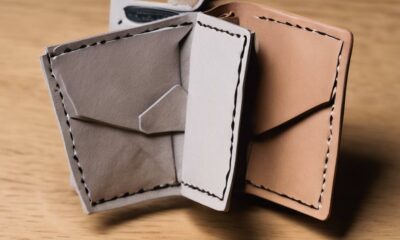
 Vetted1 month ago
Vetted1 month ago14 Best Personalized Father's Day Gifts for Your Husband – Show Him You Care
-

 Alfresco1 month ago
Alfresco1 month agoAlfresco Stacker Doors: Seamless Indoor-Outdoor Living!
-

 Craft and Textiles3 months ago
Craft and Textiles3 months ago15 Best Places to Buy Appliances for Your Home – Top Retailers Reviewed
-
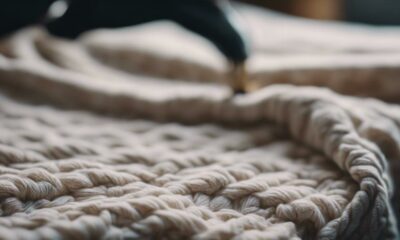
 Decorative Throws3 months ago
Decorative Throws3 months agoIs It Better to Dry Clean Blankets?
-

 Tableware and Dining Accessories3 months ago
Tableware and Dining Accessories3 months agoWhat Is the Meaning of the Word Tableware
-

 Tableware and Dining Accessories3 months ago
Tableware and Dining Accessories3 months agoWhat Is the Hindi Meaning of Tableware
-

 Craft and Textiles3 months ago
Craft and Textiles3 months ago15 Best Cordless Mowers for Effortless Lawn Care – Top Picks of 2024
-

 Yarn3 months ago
Yarn3 months agoIs Yarn Natural or Manmade? Unravel the Truth






















